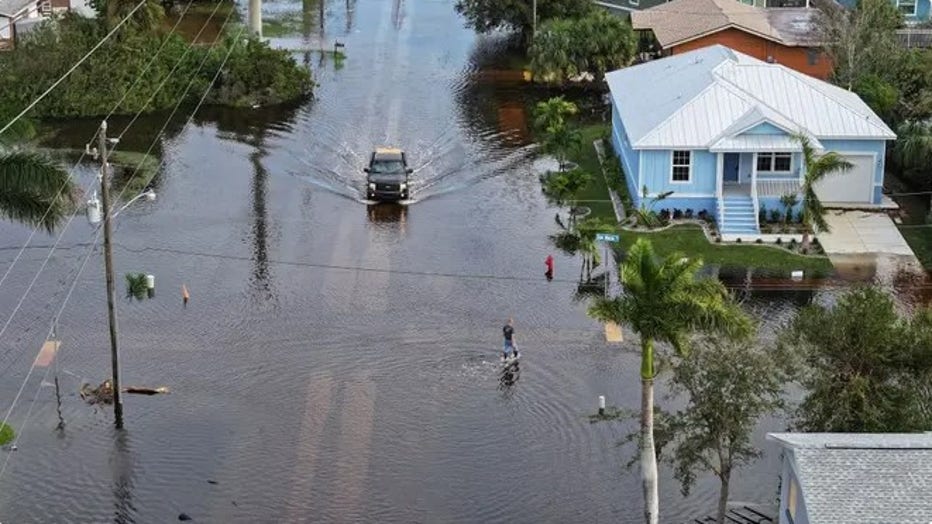Florida reports spike in flesh-eating bacteria cases following recent hurricanes
TAMPA, Fla. - Cases of flesh-eating bacteria have seen an unusual spike following impacts from Hurricanes Helene and Milton, data from the Florida Department of Health shows.
According to the health department, 70 cases have so far been reported in 2024, with 11 deaths – figures that are similar to 2022 when Hurricane Ian damaged Collier and Lee counties.
The health department attributed a rise in cases in Citrus, Hernando, Hillsborough, Lee, Pasco, Pinellas and Sarasota counties to the impacts of the recent hurricanes.
Vibrio vulnificus normally lives in warm seawater but can pose increased risks when pushed inland by tropical cyclones.
Despite the apparent increase in coastal communities, infections are still considered to be extremely rare.
According to the health department, infections can occur by consuming contaminated shellfish or through open wounds that are exposed to water.
SATELLITE DATA SHOWS RISING THREAT OF RED TIDE FOR FLORIDA GULF COAST
To reduce the risk of infection, health officials advise against consuming raw oysters or shellfish and avoiding the exposure of open wounds to standing water.
"Healthy individuals typically develop a mild disease; however Vibrio vulnificus infections can be a serious concern for people who have weakened immune systems, particularly those with chronic liver disease," the Florida DOH stated. "The bacterium can invade the bloodstream, causing a severe and life-threatening illness with symptoms like fever, chills, decreased blood pressure (septic shock) and blistering skin lesions."
Red tide risk also increasing
In addition to Vibrio vulnificus, scientists are also monitoring for an uptick in Karenia brevis – the algae that produces red tide – along the Gulf Coast.
Following Hurricane Milton’s landfall near Sarasota, satellites detected significant levels of chlorophyll, which can sometimes be a precursor to the production of red tide events.
The American Lung Association warns that those exposed to the toxins can experience respiratory symptoms, which include coughing, sneezing, runny nose, wheezing or shortness of breath.
Unlike Vibrio vulnificus infections, exposures to Karenia brevis are not known to result in human deaths but can be detrimental to marine life.

PUNTA GORDA - OCTOBER 10: In this aerial view, a person walks through flood waters that inundated a neighborhood after Hurricane Milton came ashore on October 10, 2024, in Punta Gorda, Florida. The storm made landfall as a Category 3 hurricane in the
HELENE KILLS 11 MEMBERS OF THE SAME FAMILY AFTER MUDSLIDE DESTROYS THEIR COMMUNITY
Between 1988 and 2006, the Centers for Disease Control and Prevention (CDC) reported receiving information on more than 900 Vibrio vulnificus infections from the Gulf Coast states, but health officials cautioned that counts may be on the low side due to insufficient reporting.
Read more at FOXWeather.com.
STAY CONNECTED WITH FOX 13 TAMPA BAY:
- Download the FOX Local app for your smart TV
- Download the FOX 13 News app for breaking news alerts, latest headlines
- Download the SkyTower Radar app
- Sign up for FOX 13’s daily newsletter

